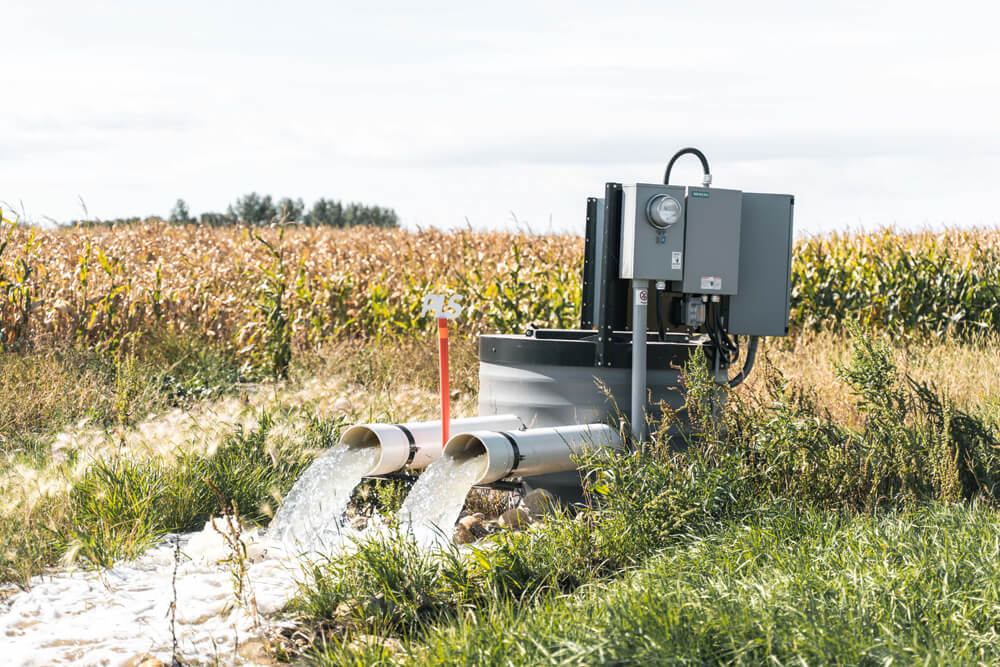 Tile Drainage
Tile DrainageTile drainage is the practice of placing underground pipes to provide a means for water to be removed from the soil. We use corrugated polyethylene (PE) pipes for all of our installations.
Years ago, concrete or clay “tiles” were used to drain excess water. Developing the name we know today “tile drainage”.
The pipe is perforated to allow water to seep in. It is buried throughout the field at a precise grade to allow the water to drain out, typically into a ditch or a creek. Resulting in the water table being lowered to a point where roots are no longer drowning, and capillary action can continue bringing usable water into the root zone.
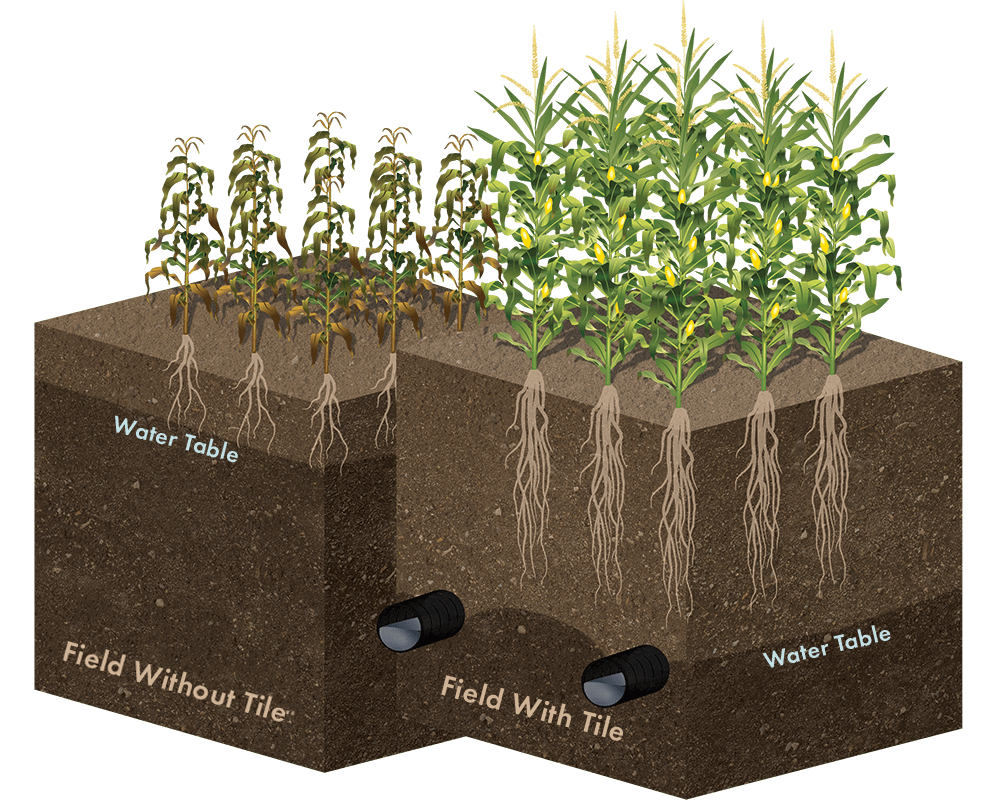
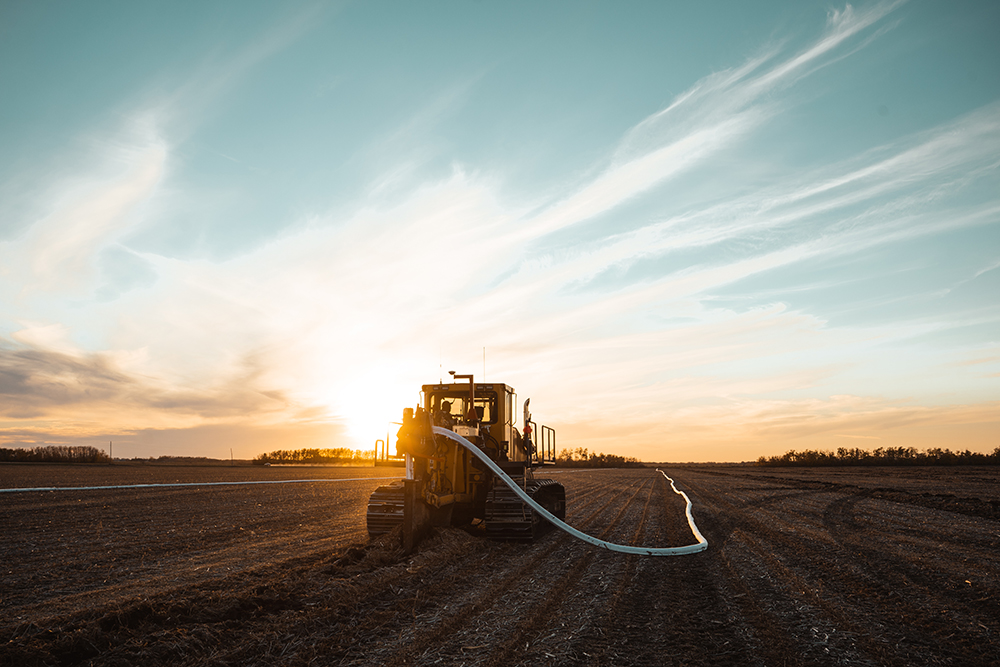
 How is it installed?
How is it installed?We use commercially built tile plows that are controlled by GPS utilizing up to 32 satellites at once. The entire system is built around the accuracy of installation, which is critical for the tile to work effectively.
As with all technology, it’s the operator that makes something work. Our company is committed to using only highly qualified operators in all of our equipment.
Quality and accuracy are our number one concern with any drainage project.
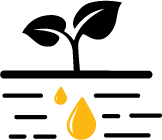 Will tile dry out the soil?
Will tile dry out the soil?The short answer is no. Without it, the additional water is causing the roots to drown from lack of oxygen. Once the tile drainage is installed, it only removes the excess water, which is taking up airspace from the soil. Leaving behind the “hygroscopic” water, for the plants to absorb.
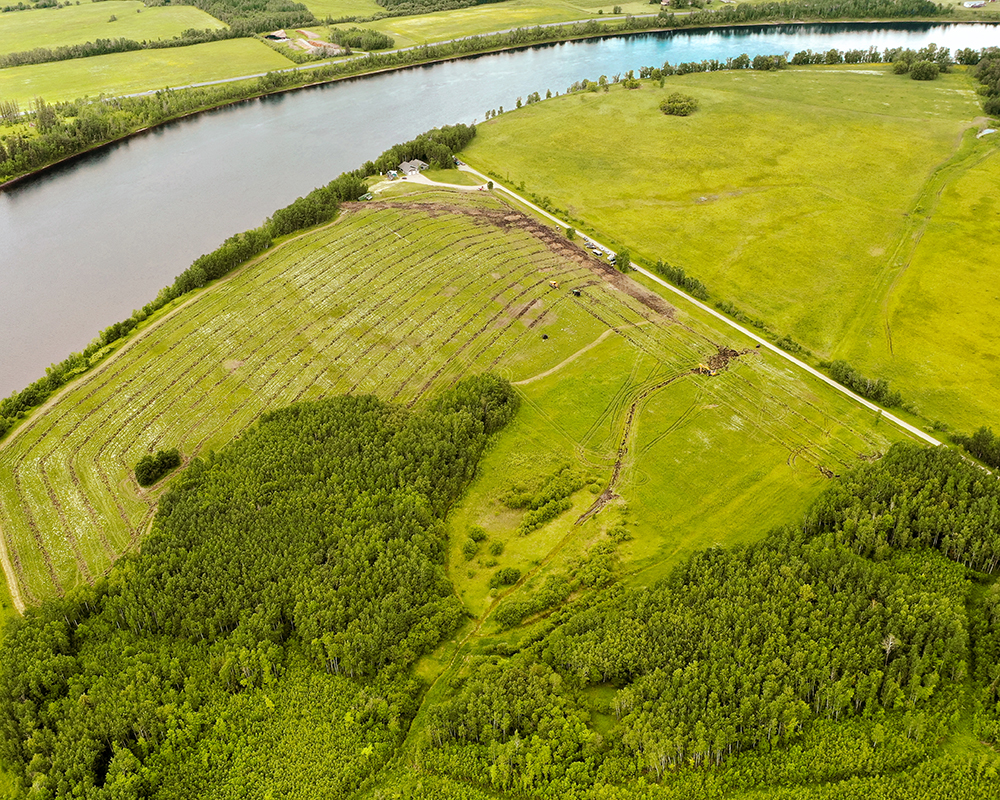
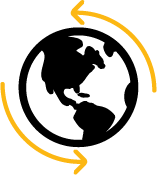 Environmental Impact
Environmental ImpactResearch has shown that installing tile drains artificially lowers the water table increasing the environmental benefits associated with this practice. When excess rainfall occurs, a field that is not tiled will “fill up”, causing the water table to rise closer to the surface, resulting in surface runoff. This overflow then carries out the soil particles, nutrients, and pesticides all with it. On the other hand, a field that is tiled has more room for the water to infiltrate and filter properly. Since the soil particles cannot enter the tile, the soil, nutrients, and pesticides stay on the field where they belong.
Nitrates, which are soluble, have a potential to leach through the soil with the movement of water. Either down into the water table or potentially off the surface together with the sediments if the soil remains inundated. Since tile drainage removes excess water, nitrates that have not been used up by the crop, and are dissolved in the soil moisture can be drawn downward and removed through the tile. We encourage “4R nutrient stewardship” to minimize this risk. 4R nutrient stewardship requires the implementation of best management practices (BMPs) that optimize the efficiency of fertilizer use. The goal of fertilizer BMPs is to match nutrient supply with crop requirements and to minimize nutrient losses from fields. Selection of BMPs varies by location, and those chosen for a given farm are dependent on local soil and climatic conditions, crop, management conditions and other site specific factors. The 4 Rs are Right source, Right rate, Right timing, Right placement.
 Reducing GHG Emissions
Reducing GHG EmissionsTile drainage systems offer a promising solution to reduce greenhouse gas emissions in agriculture. They enhance soil aeration, minimizing methane and nitrous oxide emissions, while also improving nutrient management, increasing crop productivity, and supporting carbon sequestration. Embracing tile drainage alongside other sustainable practices is crucial for a more climate-resilient agriculture sector, contributing to both environmental conservation and economic benefits for farmers.
 Better Soil Health
Better Soil HealthLong overlooked, soil biology has a significant impact on crop growth and long-term productivity. Tiled land allows field drainage to promote healthy soil through granulation and root interaction with water and air. The converted porous soil retains the necessary moisture for optimal growth. More oxygen in the soil will increase microbial activity. This is vital for plant growth to help make nitrogen and sulfur more accessible.
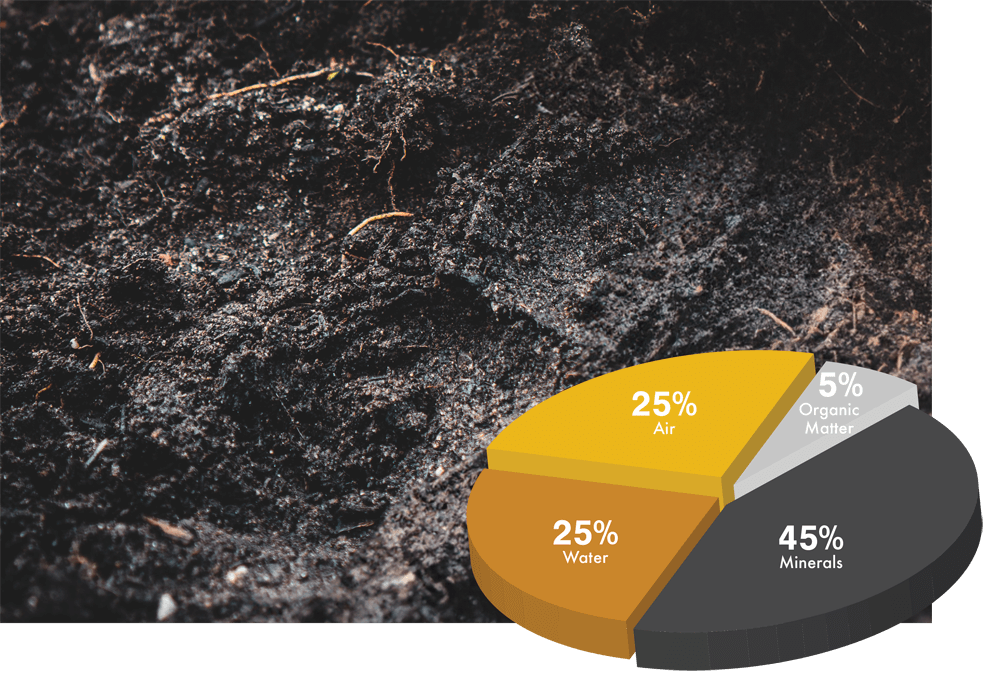
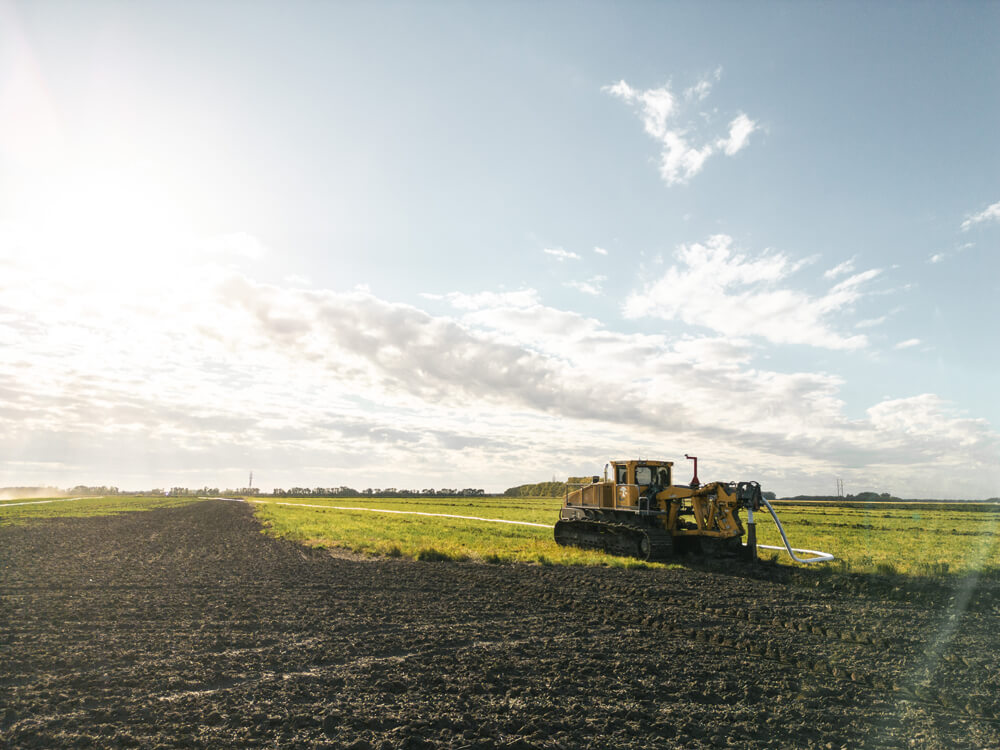
 More Efficient Use of Nitrogen
More Efficient Use of NitrogenTile drainage creates dryer soil that is optimal for nitrogen utilization. Since nitrogen is one of the most expensive inputs, a reduced amount allows you to save money and produce better crops. Tile drainage can also decrease the denitrification that occurs in waterlogged land, by keeping the water table shallow.
 Minimized Risk
Minimized RiskTile drainage produces not only an increase in yield but a reliable and consistent growth in revenue. Studies have shown that un-drained soil had a 46% fluctuation in crop, compared to tiled soil that only varied by 18%. A steady yield allows for a steady cash flow. Tile drainage also provides the ability to reduce the severity of flood and drought occurrences. During flood years, tiled land is improved by the capacity of the soil, retaining water, and minimizing crop stress. This also allows the soil structure to develop the plant’s roots to infiltrate deeper, depleting the water table in drought years.
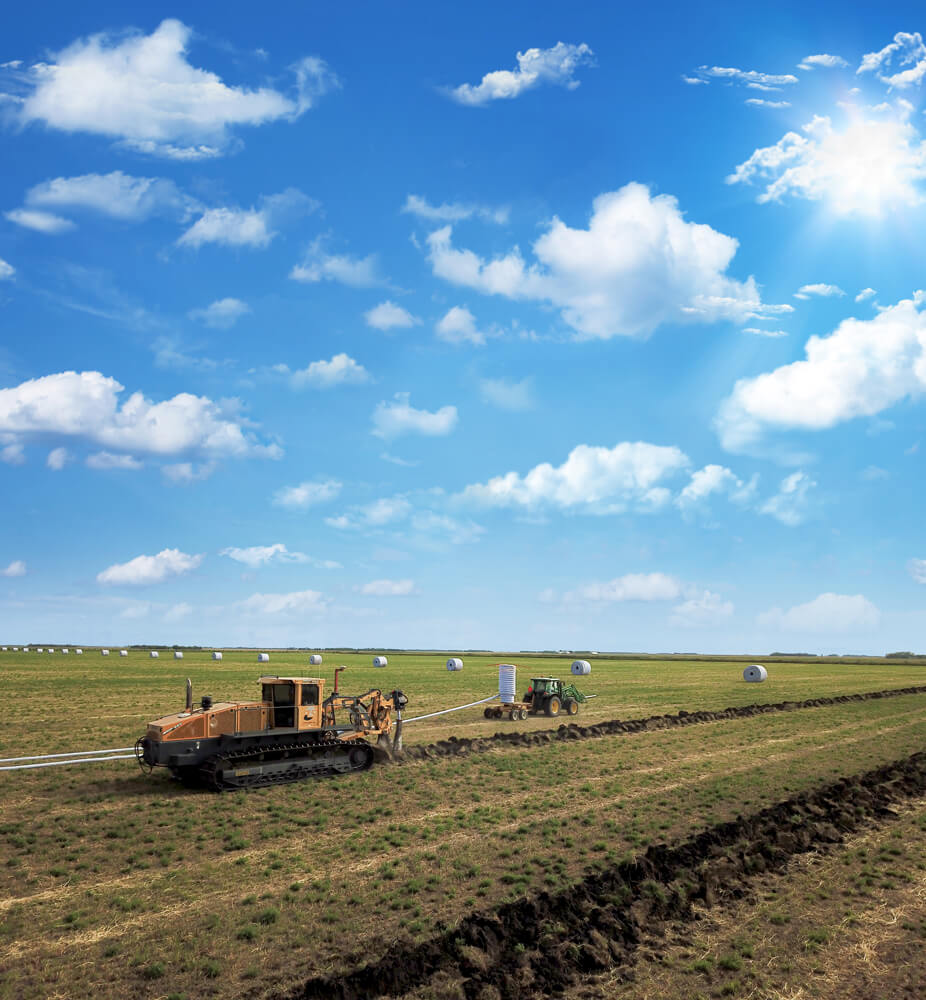
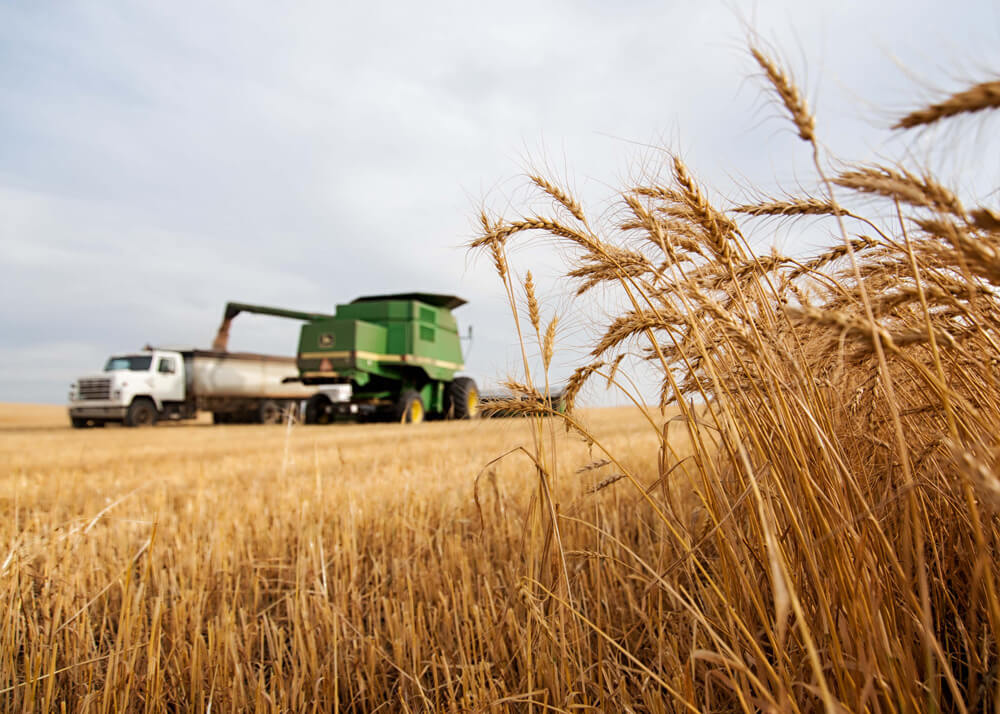
 More Timely Field Operations
More Timely Field OperationsA tiled field will ultimately drop moisture sooner, allowing you the opportunity to seed or harvest earlier. Tiled land allows farmers to be in the fields when it counts. Longer days during the season help spread out the workload and use of equipment more efficiently.
 Salinity Control
Salinity ControlCommonly referred to as “alkali”, salinity spots are a sign of poor internal drainage. Over time, tile drainage can fully diminish these spots. By lowering the water table and stopping the capillary action, which will bring the water to the soil surface.
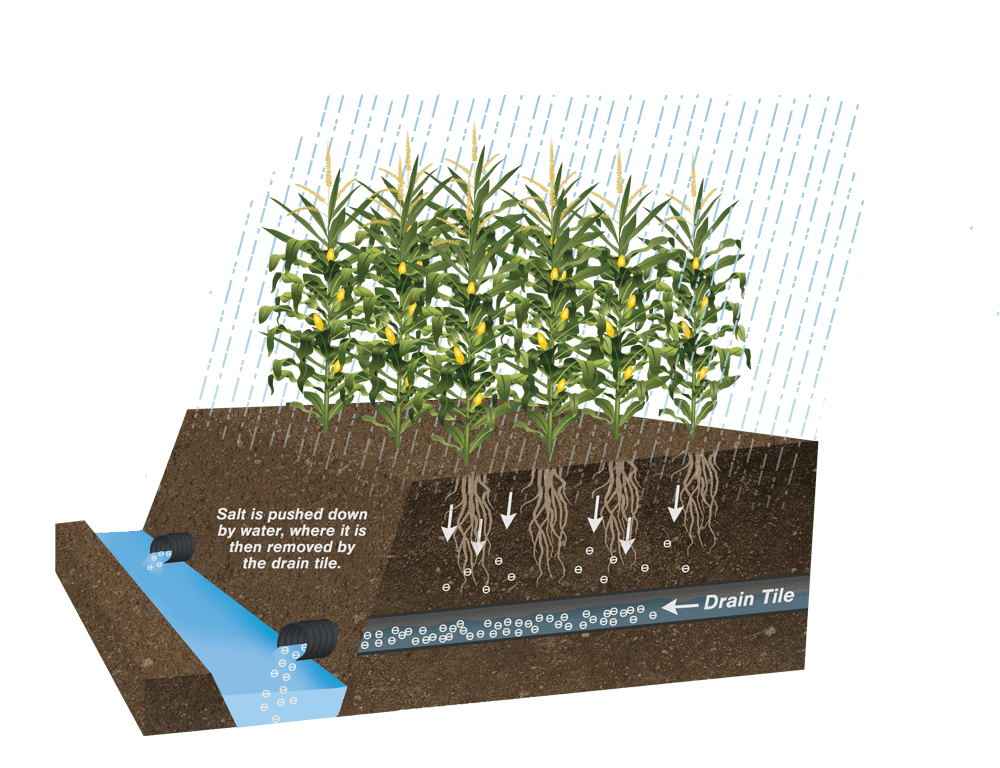
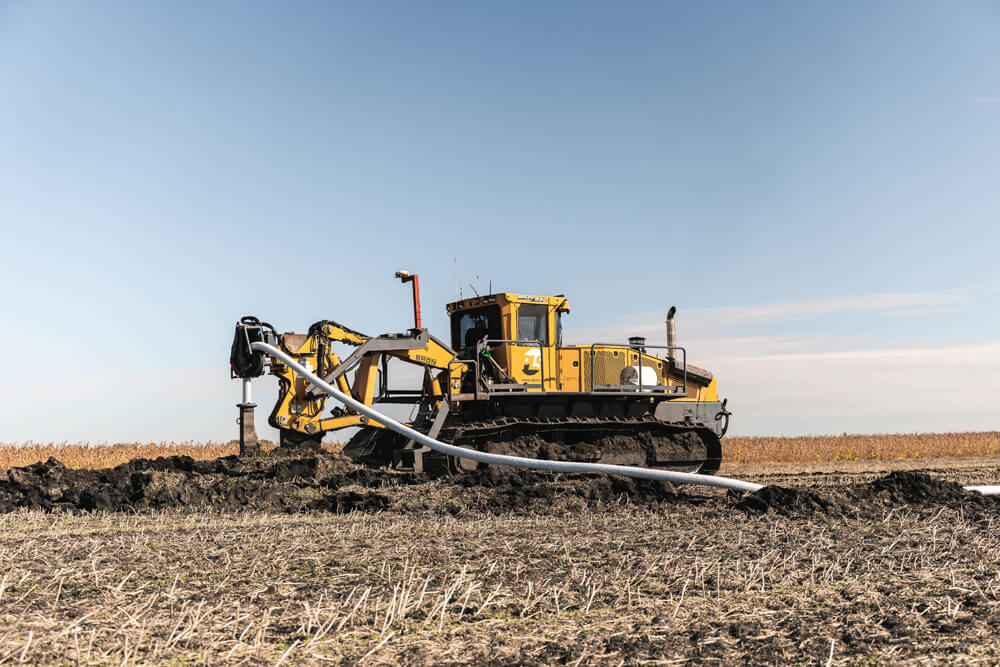
Precision Land Solutions provides a turn-key tile drainage operation. A full-service installation crew, along with all of the equipment and technology to manage your project from start to finish.
We use the most advanced tile installation tools available on the market, both in software and equipment. With multiple Bron 850 plows in operation and the latest GPS and software technologies utilizing up to 32 satellites at once. You can’t find a more advanced working approach in the industry.
An accurate mapping and tile drainage design are extremely important when ensuring the success of water management. Our GPS mapping uses Real-time kinematic positioning (RTK) to continuously correct for common errors in current GPS systems, allowing for accuracy within a centimetre.
Our process begins with a site visit to your field to determine the feasibility of water management. We then survey and create a custom design based on your field’s specifications.
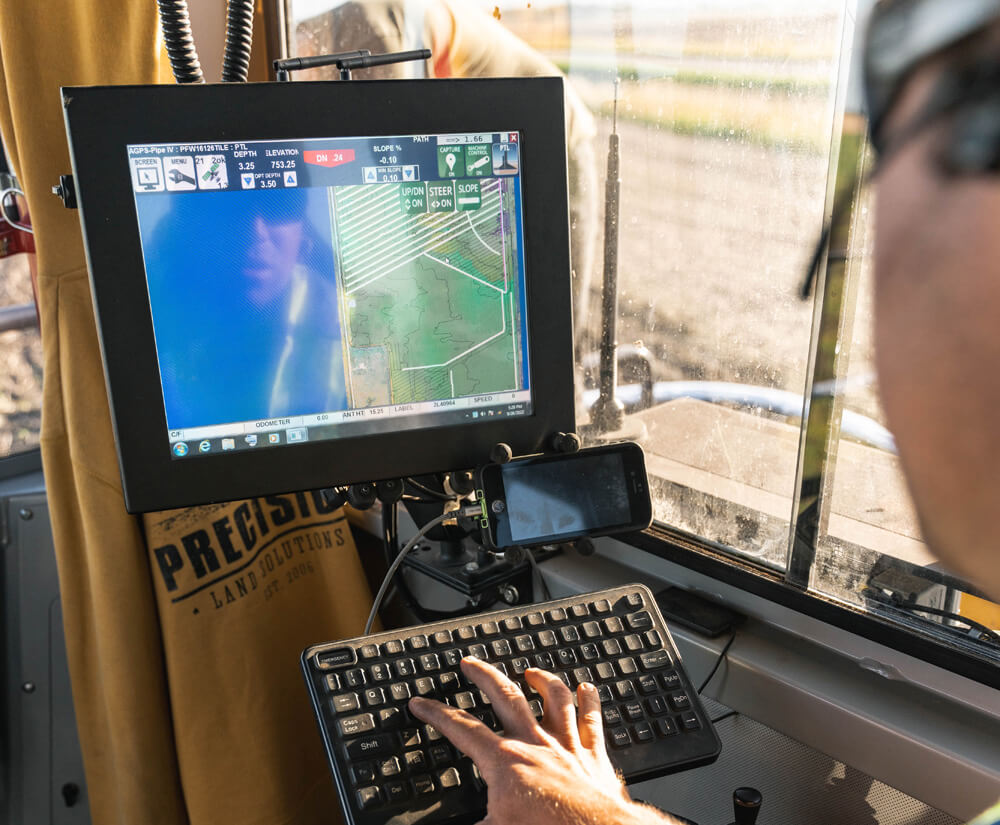
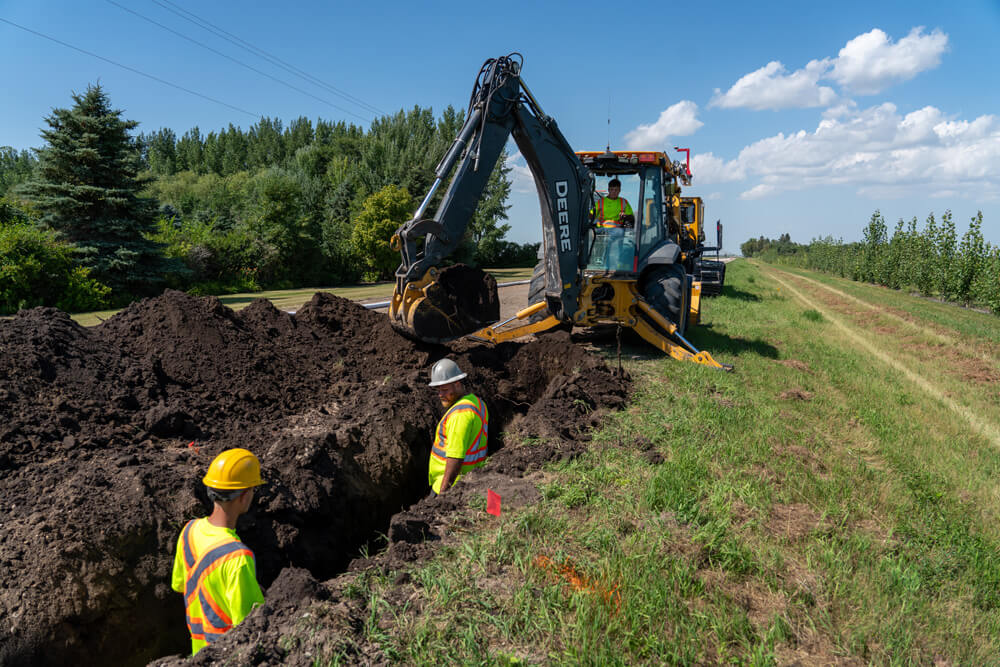
Our team grows to over 30 people in our peak season and includes operating crews, project managers, an agronomist, safety officer, and administrative professionals.
PLS has developed an extremely reliable lift station that has many solutions to allow for flexibility, even if you’re not immediately near a power source.
